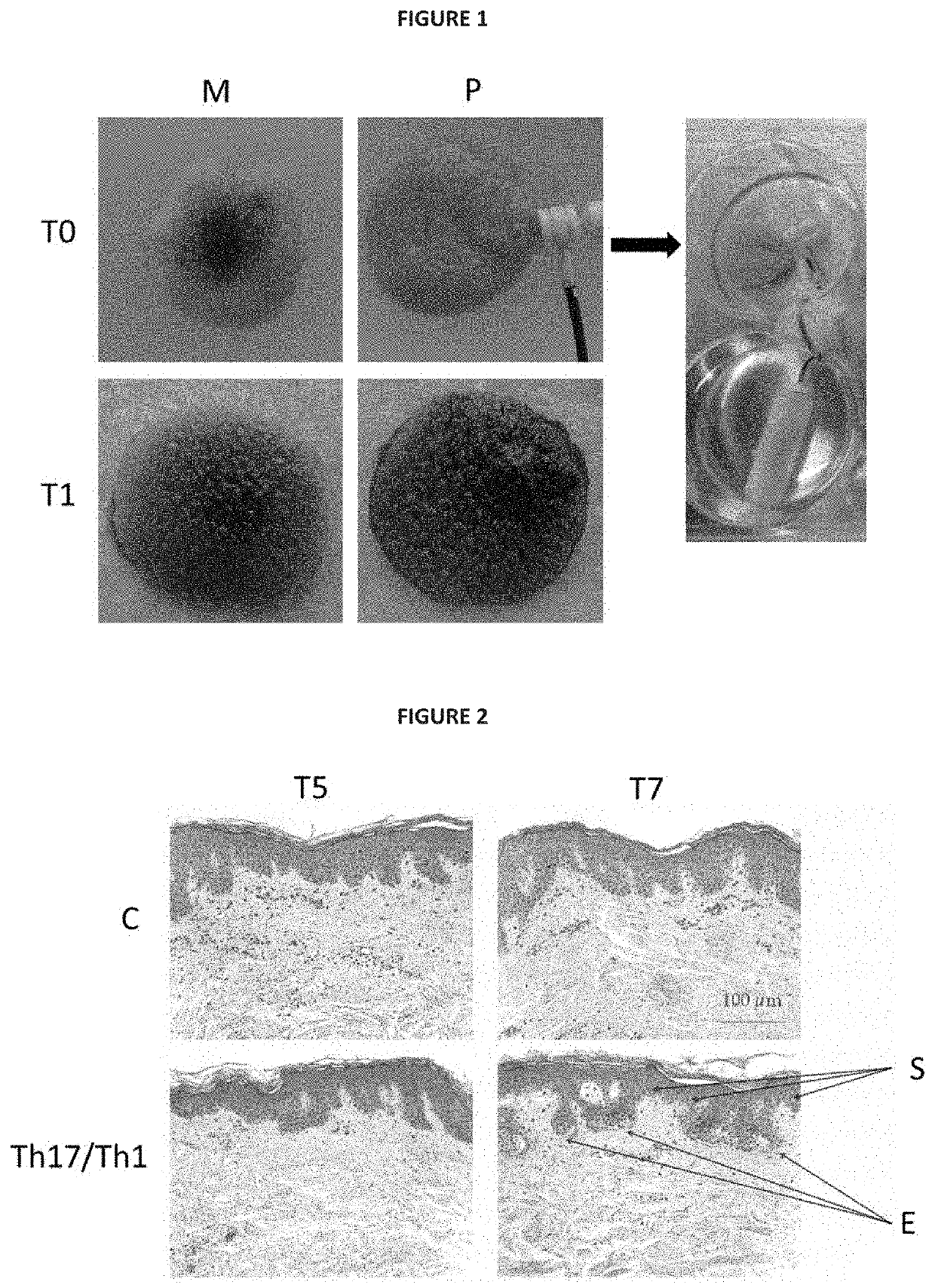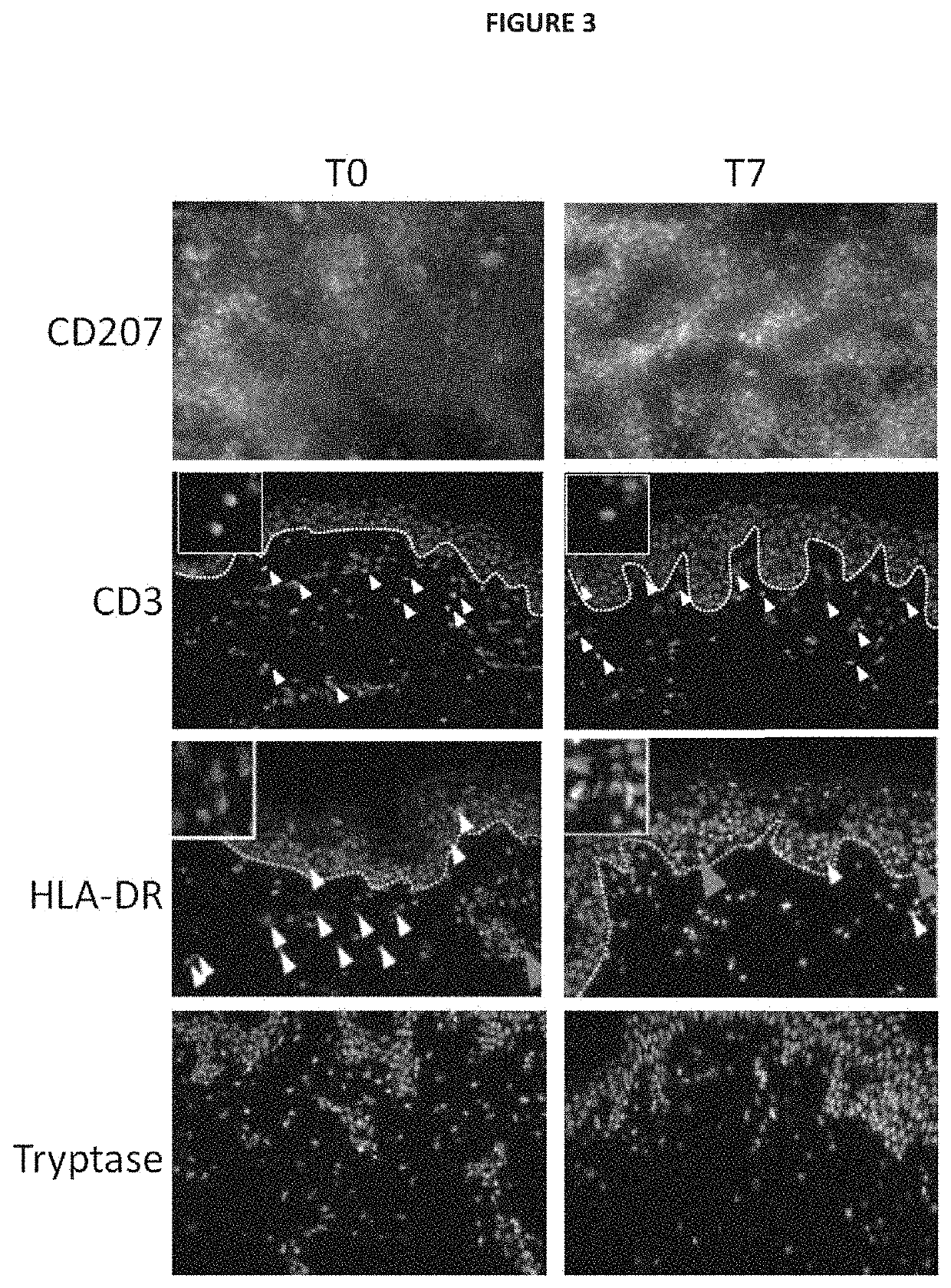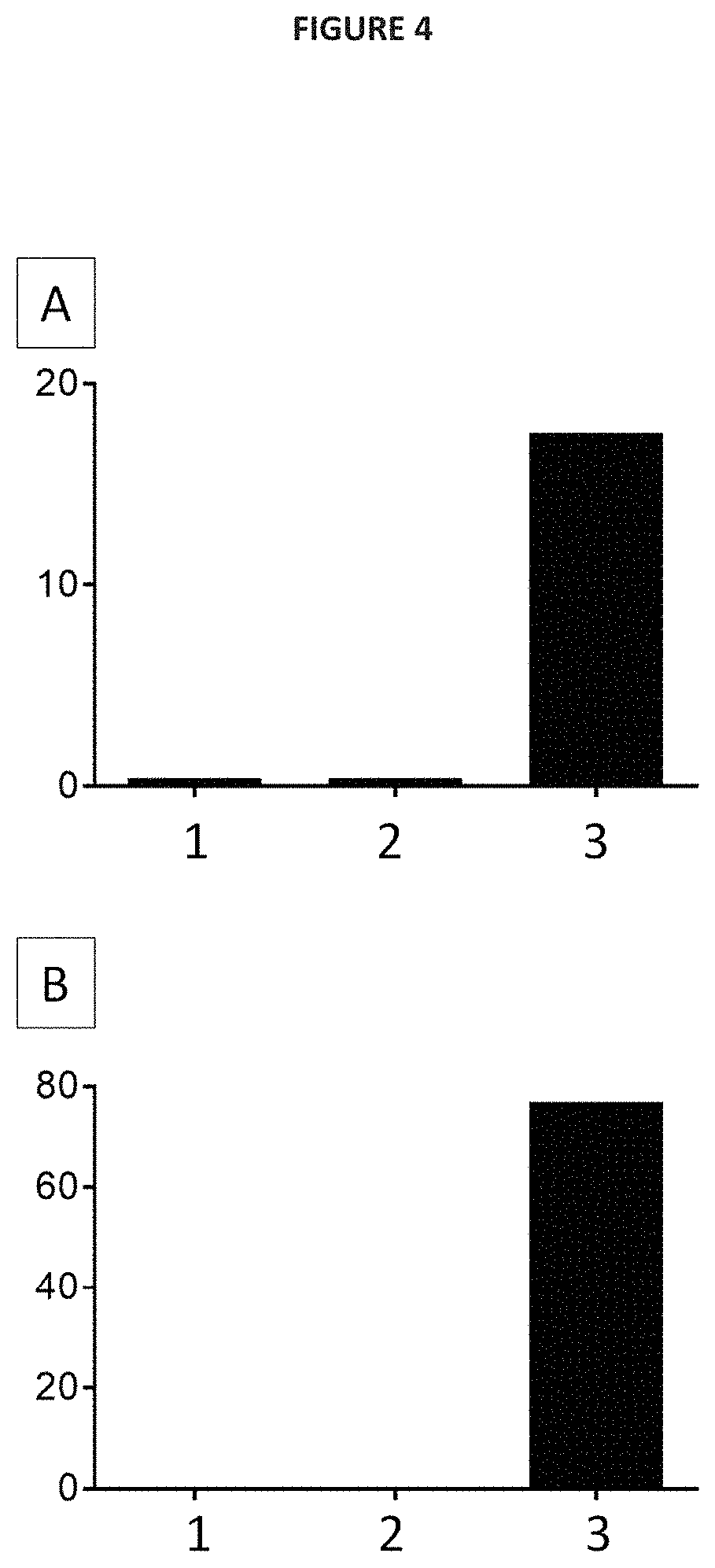Ex vivo model of inflamed human skin and uses thereof for screening Anti-inflammatory compounds
a human skin and inflamed technology, applied in the field of ex, can solve the problems of inability to cure psoriasis, model does not have all the phenotypic and histological characteristics of psoriasis, and significant side effects
- Summary
- Abstract
- Description
- Claims
- Application Information
AI Technical Summary
Benefits of technology
Problems solved by technology
Method used
Image
Examples
examples
1—Preparation of Skin Biopsies
[0202]The skin biopsies are prepared from a complete skin sample, including the epidermis, dermis, and hypodermis. Based on these biopsies, two different embodiments are possible depending on the nature of the anti-inflammatory compounds to be tested.
[0203]In a first embodiment, the adipose tissue (namely the hypodermis) is cut with curved scissors in order to separate it from the dermis. The biopsies (epidermis and dermis), the thickness of which is about 3 mm, are then cut out using a metal punch. This first embodiment is for testing anti-inflammatory compounds by a topical application.
[0204]In a second embodiment, the hypodermis is preserved. The biopsies (epidermis, dermis, and hypodermis), the thickness of which is about 1 cm, are then cut out using a metal punch. This second embodiment is for testing anti-inflammatory compounds by subcutaneous injection.
[0205]Once prepared, the biopsies are maintained floating in buffered saline until the resident...
PUM
 Login to View More
Login to View More Abstract
Description
Claims
Application Information
 Login to View More
Login to View More - R&D
- Intellectual Property
- Life Sciences
- Materials
- Tech Scout
- Unparalleled Data Quality
- Higher Quality Content
- 60% Fewer Hallucinations
Browse by: Latest US Patents, China's latest patents, Technical Efficacy Thesaurus, Application Domain, Technology Topic, Popular Technical Reports.
© 2025 PatSnap. All rights reserved.Legal|Privacy policy|Modern Slavery Act Transparency Statement|Sitemap|About US| Contact US: help@patsnap.com



